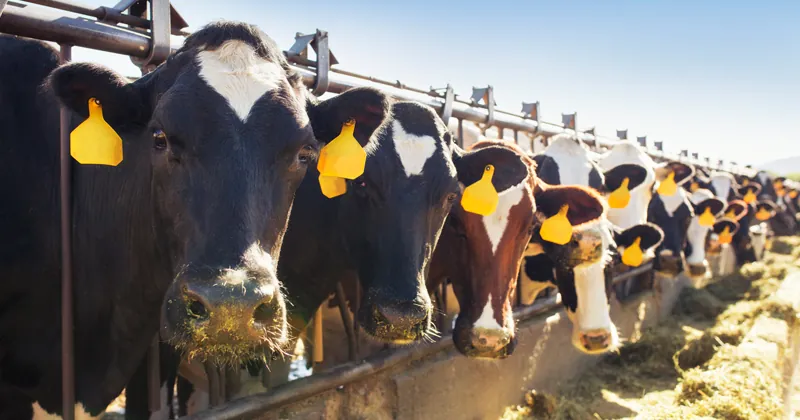
The Dark Side of Raw Milk: Bird Flu Threat and Health Risks
2025-01-10
Author: Nur
The Rising Trend of Raw Milk Sales
In an alarming trend, over half of U.S. states, including Delaware, now permit the sale of raw milk directly from farms. This move has sparked significant debate among consumers, health experts, and regulatory agencies. While some advocates praise raw milk for its taste and purported nutritional benefits, health professionals and the FDA are raising red flags, especially in light of recent bird flu outbreaks affecting dairy farms nationwide.
Legal Developments
In May, Delaware's state legislature enacted a law allowing dairy producers with permits to sell unprocessed, unpasteurized milk directly to consumers. This decision parallels a national movement, fueled partly by individuals like Robert F. Kennedy Jr., President-elect Trump's appointee to head the Department of Health and Human Services (DHHS), who is advocating for greater access to raw milk.
FDA's Stance
However, the FDA has staunchly opposed the consumption of raw milk for decades, emphasizing the health risks associated with unpasteurized products. Since the 1980s, the agency has prohibited the interstate sale of raw milk, warning consumers about the potential dangers.
Health Risks of Raw Milk
Raw milk, sourced from cows, goats, or sheep, can harbor harmful pathogens such as Campylobacter, Salmonella, and E. coli. With the emergence of highly pathogenic avian influenza detected in dairy cattle across 16 states, these dangers have grown more concerning. The Centers for Disease Control and Prevention (CDC) reported over 900 cases of bird flu in livestock, including at least 40 human infections linked to close contact with sick dairy cows.
Expert Opinions
Professor Kali Kniel from the University of Delaware highlights the pressing need for awareness. "The risks associated with raw milk consumption are compounded by bird flu testing. The presence of avian influenza adds a new layer of concern, making the case even stronger for opting for pasteurized milk," she states.
The Pasteurization Process
The pasteurization process involves heating milk to 161 degrees Fahrenheit for 15 seconds to eliminate pathogenic bacteria. Experts assure that this method does not significantly impact the milk's nutritional value, despite claims by raw milk proponents that unpasteurized versions boast superior health benefits.
Statistics and Outbreak Data
For those tempted to indulge in raw milk, it's important to note the statistics: consumers of raw dairy are 840 times more likely to suffer from foodborne illness than their pasteurized counterparts. Furthermore, the CDC recorded 75 outbreaks from 2013 to 2018, resulting in 675 illnesses, with children under 19 being disproportionately affected.
Cultural and Psychological Factors
Despite these warnings, the allure of raw milk persists due to nostalgic connections and a belief that it retains more nutrients. However, the risks, particularly to vulnerable populations—including young children, the elderly, and pregnant women—are significant and should not be overlooked.
USDA's Raw Milk Testing
As the USDA initiates raw milk testing across multiple states to identify possible contamination from bird flu, the agency aims to understand the spread of this virus better. This proactive approach highlights the potential consequences of consuming raw, untested milk in an agricultural landscape now challenged by novel pathogens.
Conclusion
Consumers are urged to think critically and prioritize their health and safety by choosing pasteurized dairy products over raw milk, especially as risks like bird flu and other zoonotic diseases loom large. The message remains clear: when it comes to raw milk, the potential hazards can far outweigh any perceived benefits.
 Brasil (PT)
Brasil (PT)
 Canada (EN)
Canada (EN)
 Chile (ES)
Chile (ES)
 Česko (CS)
Česko (CS)
 대한민국 (KO)
대한민국 (KO)
 España (ES)
España (ES)
 France (FR)
France (FR)
 Hong Kong (EN)
Hong Kong (EN)
 Italia (IT)
Italia (IT)
 日本 (JA)
日本 (JA)
 Magyarország (HU)
Magyarország (HU)
 Norge (NO)
Norge (NO)
 Polska (PL)
Polska (PL)
 Schweiz (DE)
Schweiz (DE)
 Singapore (EN)
Singapore (EN)
 Sverige (SV)
Sverige (SV)
 Suomi (FI)
Suomi (FI)
 Türkiye (TR)
Türkiye (TR)
 الإمارات العربية المتحدة (AR)
الإمارات العربية المتحدة (AR)